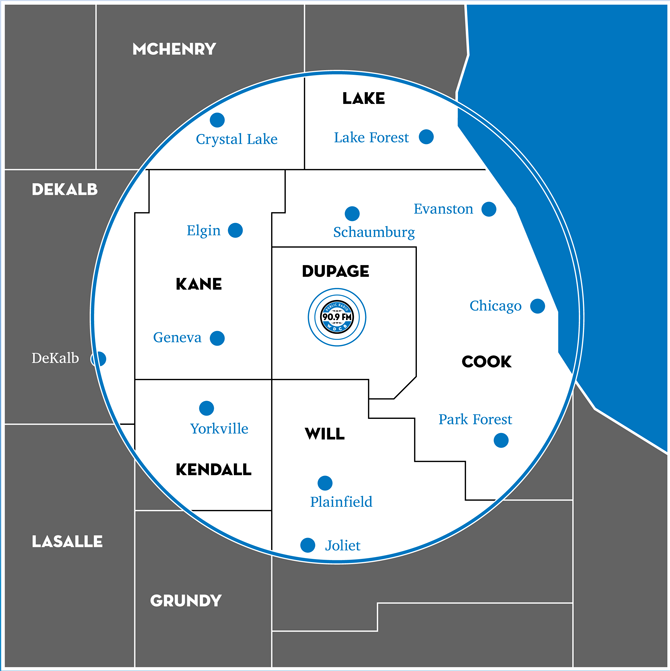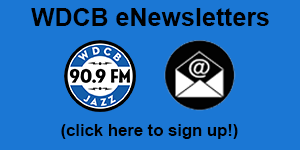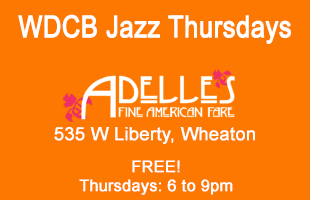Listening to WDCB on the FM Dial
WDCB can be heard in the Chicagoland area by tuning your radio to 90.9fm. You can also listen to our streaming audio via this website here. Cable TV viewers in the city of Chicago can also listen WDCB through their televisions on cable channel CAN TV42.
WDCB broadcasts at 5,000 watts to northeastern IL. If you are having difficulty receiving WDCB's signal, and are in WDCB's listening area (see the coverage map below), you can find some helpful tips below to improve WDCB's reception.
WDCB's Coverage Map

WDCB Reception Issues
WDCB strives to have the best on-air signal possible. We operate our transmitter at the Federal Communications Commission licensed parameters for power, antenna configuration, and modulation. Each station has a different antenna height and power output, thus each has a different coverage range. WDCB works hard to ensure our transmitted signal is the best it can be, but we can’t simply “turn up the power” as that would be in violation of the FCC’s assignment for our license. There are circumstances that may cause a temporary or more persistent form of interference to your reception of WDCB, especially if you are near the distant edge of our reception area and have trouble receiving WDCB clearly already.
Here are some common interference issues and possible solutions:
Noise Interference
When fighting noise interference it can be very helpful to locate the radio and/or its antenna away from likely sources of interference such as cell phone chargers, light dimmer switches, fluorescent lighting, computers, microwave ovens, TV's, etc - these are all known noise-makers. Some newer sources of noise interference that have recently cropped-up may be related to the newer "LED" type traffic lights or large electronic billboards.
Interference from Other Radio Stations
If you are tuned to 90.9FM and can hear radio programming other than WDCB, then perhaps the source is another broadcast transmitter or radio device. With the FM radio dial becoming more densely packed with stations, it is possible another station may be overpowering your reception at the edge of our reception area. In some cases, this can be caused by the other stations themselves, though it can also be caused by another weather-related phenomenon that causes distant signals to interfere with ours (see “Tropospheric Ducting” below.) If you feel your reception of WDCB is consistently being interfered with by another station that you hadn’t heard in the past, please contact us and we’ll do our best to help you diagnose the problem.
Tropospheric Ducting
Sometimes very distant FM stations in other towns and states can cause interference to WDCB. This is caused by atmospheric condition called a “thermal inversion” that results in a situation referred to as “tropospheric ducting.” When this happens, typically in mornings and evenings with clear skies and high barometric pressure, FM and TV signals can travel far beyond their normal ranges. This is a natural phenomenon. Temperature inversions, particularly over Lake Michigan, can cause such interference from distant stations. For WDCB listeners, this may temporarily result in your reception of stations that broadcast on 90.9FM in downstate Illinois or even across the lake in Michigan. When this situation exists, folks in the distant towns may be getting a clear signal from WDCB. This sort of interference is unlikely to last beyond a few hours or at most a couple days.
Reception Changes through the Day, or Across the Seasons
Sometimes FM signals sound noisy or distorted due to the combination of signals direct from the transmitter site with other signals reflected from hills, buildings, trees, etc. Since these signals take different paths to your radio, they can either add or subtract from each other, causing distortion of the intended signal. Don't hesitate to move your radio and antenna around to find the best reception location. The changes in vegetation and foliage as the seasons change also can have an impact on these FM reflections.
Your Radio Receiver
A good-quality radio is helpful, especially when more powerful local station(s) on adjacent frequencies bother your reception of WDCB. Note that radios noted for excellent sound and fidelity do not always have especially good receiver circuitry.
While WDCB does not endorse a particular model, a number of our listeners have been able to overcome challenging reception situations with radios made by Sangean. In tests with WDCB listeners, Sangean’s digital receivers on both their table radios and portable models have shown better than average FM reception capability. The WR-22 model has been particularly successful during testing with WDCB listeners in Chicago. Sangean’s products tend to be found most easily online, through Amazon or other electronics retailers.
Another simple fix that costs nothing and may help with many FM radios is a simple switch from stereo to mono. If your FM receiver has a "stereo" versus "mono" switch, try it in both positions to help reception. Our transmitter runs in stereo - but if you have weak reception, your radio may perform better in mono mode.
FM Antennas
For FM broadcasting, the antennas are very important, and the built-in radio antennas can often be inadequate. Adding an external antenna can be a relatively simple way to improve reception. Does your radio have external antenna connections on the back? A simple dipole antenna made of wire would likely be of help, or a more elaborate antenna in your attic or on the roof may possibly help. An antenna move of just a couple feet can bring the signal in beautifully for one station and be a bad spot for another. Experiment with the location and orientation of the antenna for best results.
In tests with numerous WDCB listeners in the city of Chicago, an “FM Reflect Dipole Antenna” made by the C. Crane company has proven to have generally good results. This antenna retails for about $35 and can be typically found online through Amazon and other electronics suppliers.
Powered or Amplified antennas?
Several listeners have reported trouble receiving our stations after they added a powered or amplified antenna to their radio. Our experience with these devices has been mostly bad, especially in an urban environment - they often introduce more noise and interference from other stations than they boost the desired signal. In most urban settings, a passive, non-powered antenna is a better choice.


